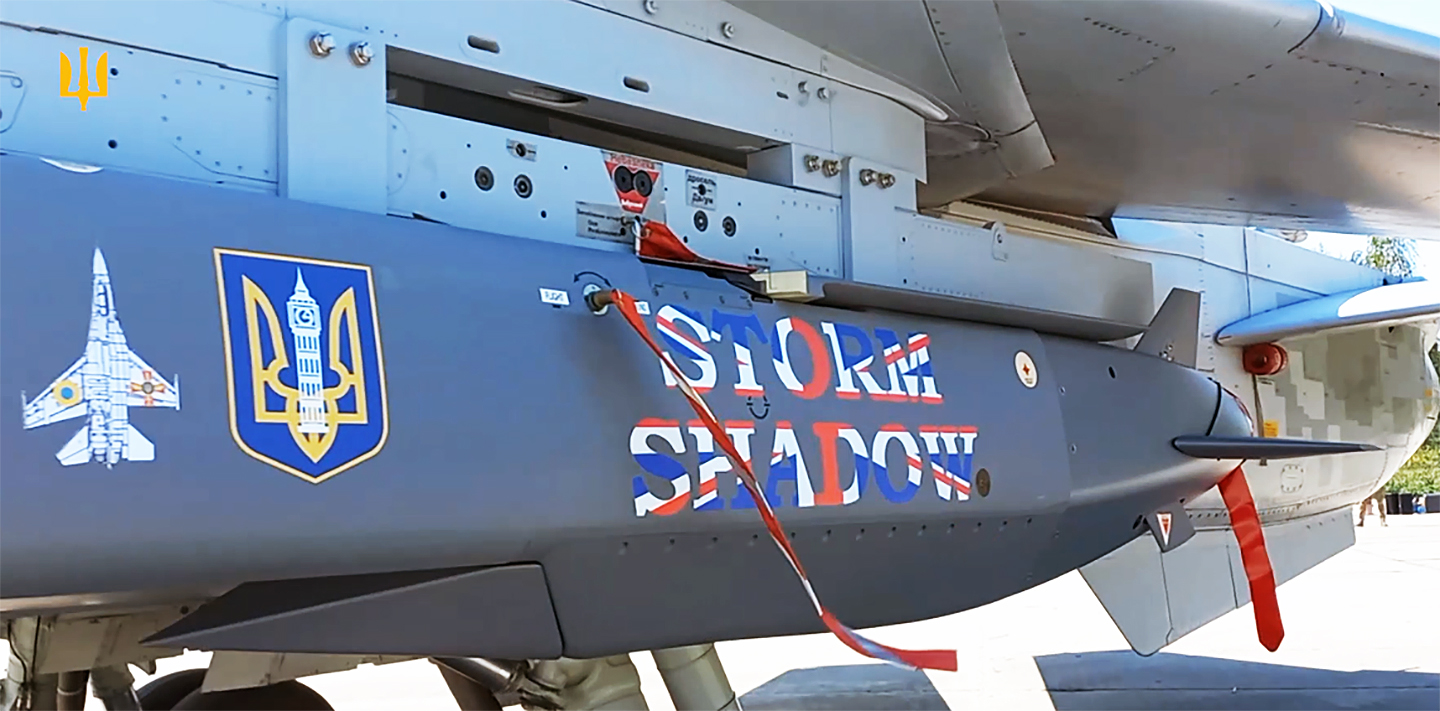Day 800 of Russia’s full-scale conflict in Ukraine and the United Kingdom, one of Kyiv’s staunchest allies, has renewed its commitment to defending the country. At the same time, British Foreign Secretary David Cameron said that he does not have a problem with weapons supplied by the United Kingdom being used by Ukraine to strike targets inside Russia.
When asked by Reuters if Ukraine has the right to use U.K.-supplied weapons to hit targets inside Russia, Cameron responded:
“Ukraine has that right. Just as Russia is striking inside Ukraine, you can quite understand why Ukraine feels the need to make sure it’s defending itself.”
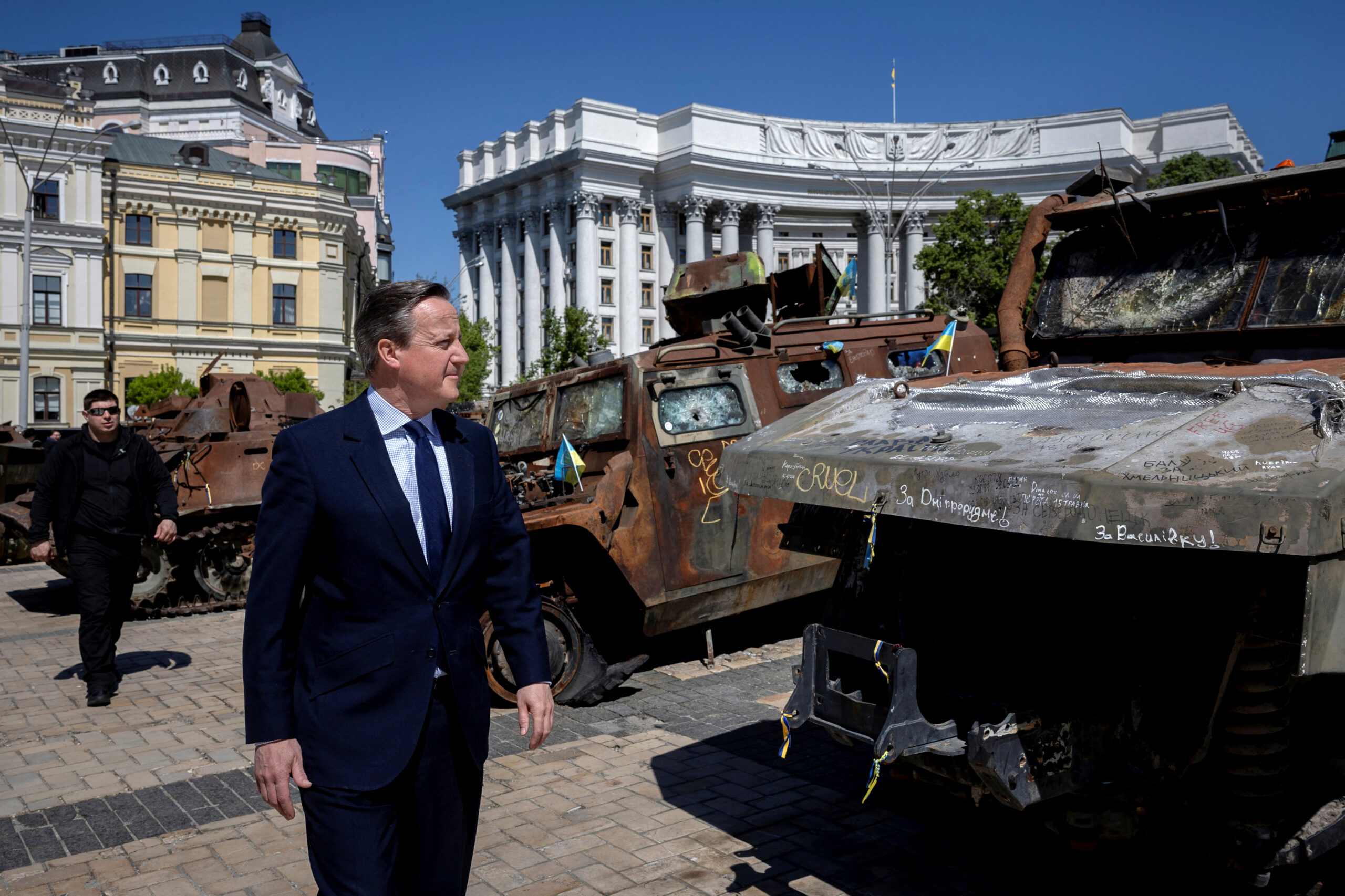
Cameron was speaking during a visit to Kyiv yesterday where he met Ukrainian President Volodymyr Zelensky.
In the past, Western-supplied long-range weapons have been provided to Ukraine with the caveat that they would not be used to strike targets within Russian borders. They have, however, been used against objectives in Russian-occupied Crimea.
During his visit, Cameron also said that his country would provide Ukraine with $3.74 billion of annual military aid — the U.K.’s biggest spending pledge since Russia’s full-scale invasion in 2022 — for “as long as it takes.”
“We will give three billion pounds every year for as long as is necessary,” Cameron said. “We’ve just really emptied all we can in terms of giving equipment. Some of that [equipment] is actually arriving in Ukraine today, while I’m here.”
The foreign secretary said that among the equipment were precision-guided bombs (likely the dual-mode Paveway IV, which you can read all about here), as well as air defense missiles including equipment for 100 mobile air defense teams of the kind tasked to shoot down Russian drones and cruise missiles.
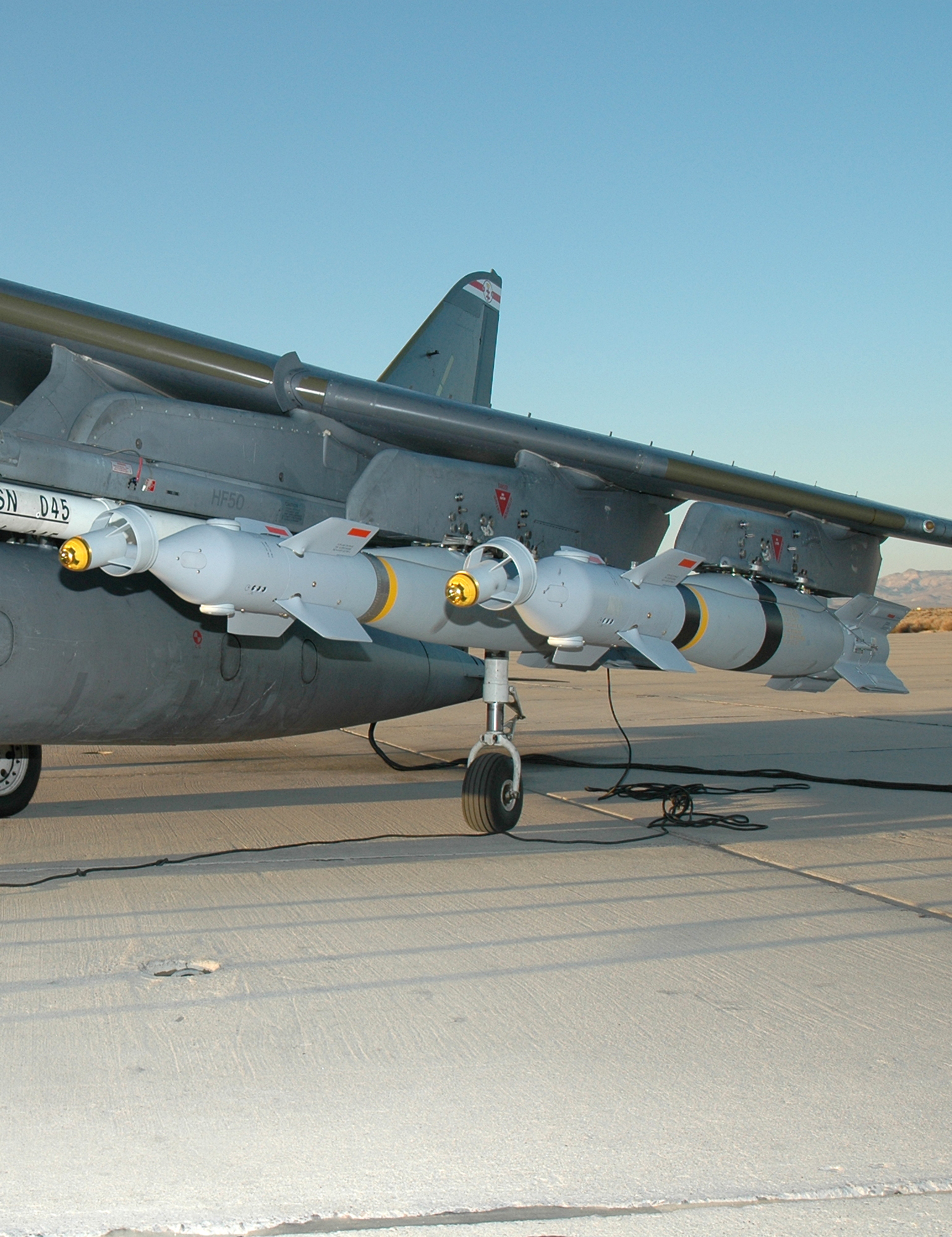
Last month, a U.K. Ministry of Defense official confirmed to TWZ that the Paveway IV was included in a package of 1,600 munitions announced by the British government. This total will also include additional Storm Shadow cruise missiles, but the exact breakdown is unclear.
The Storm Shadow would be the main candidate among British-supplied weapons for use against targets deeper within Russian borders. In its export configuration, Storm Shadow has an officially stated range of over 155 miles, although the British examples are understood to have a much greater range, in the region of 350 miles.
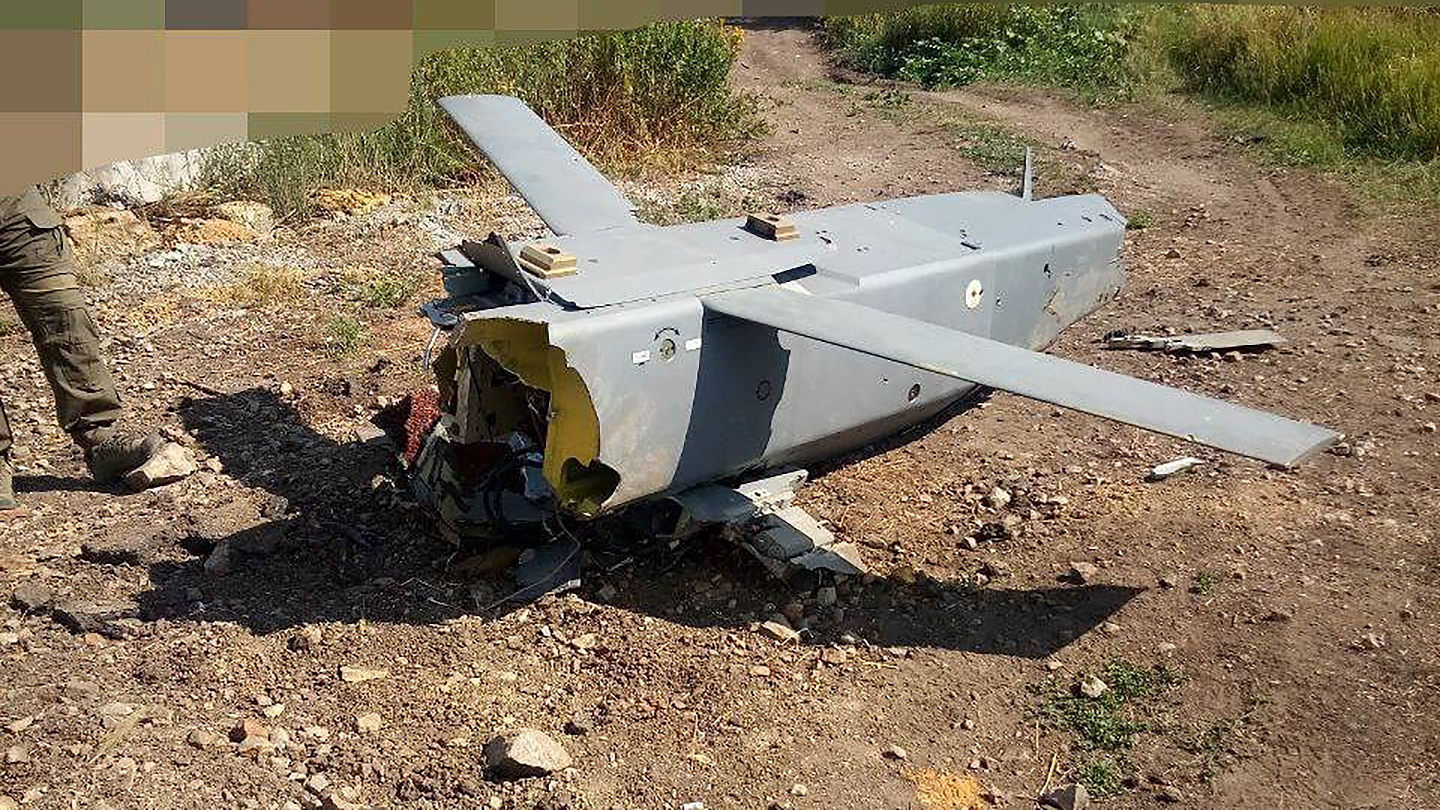
The United Kingdom has also recognized that supplying Ukraine with weapons is also burning through its own stocks, many of which are needed more urgently now that the security environment in Europe has changed so dramatically due to Russia’s invasion.
Cameron said that the United Kingdom has committed to doubling its domestic munitions production by investing a further $12.56 billion over the next 10 years.
On the subject of the conflict in Ukraine, Cameron said: “Ukraine is fiercely defending itself against Russia’s illegal invasion, making a war Putin thought would last days take years. But this war is the challenge of our generation and Ukraine cannot fight it alone.”
Cameron did, however, rule out sending British troops to Ukraine, in contrast to French President Emmanuel Macron who maintains a policy of strategic ambiguity on this issue.
Marcon has identified a particular scenario in which Western troops might be deployed to Ukraine in the future, namely if Russia were to break through the Ukrainian front lines and Kyiv specifically requested this kind of support.
“I’m not ruling anything out, because we are facing someone who is not ruling anything out,” Macron said in a recent interview with The Economist. “We have undoubtedly been too hesitant by defining the limits of our action to someone who no longer has any and who is the aggressor.”
“Our capacity is to be credible, to continue to help, to give Ukraine the means to resist. But our credibility also depends on a capacity to deter by not giving full visibility as to what we will or will not do. Otherwise, we weaken ourselves,” the French leader added.
Meanwhile, Russia is clearly becoming more concerned that long-range precision weapons will target its prized Kerch Strait Bridge.
Before diving into more developments from the conflict in Ukraine, The War Zone readers can review our previous coverage here.
The Latest
On the battlefield, Russia continues to make advances and take territory in the area around Avdiivka, the city that fell to Moscow’s forces back in mid-February after months of fierce fighting.
Ukraine’s commander-in-chief, Oleksandr Syrsky, recently confirmed that Ukrainian troops had retreated from the village of Berdychi, which lies around seven miles northwest of Avdiivka, as well as two other nearby villages.
The move was made to protect “the lives and health of our defenders,” Syrsky said.
Yesterday, Russia confirmed that it had captured Berdychi.
These Russian successes come as the country’s minister of defense, Sergei Shoigu, announced that the Kremlin’s troops have taken control of 547 square kilometers — roughly 211 square miles — of Ukrainian territory this year.
Speaking to senior military commanders today, Shoigu claimed that Ukrainian forces were retreating all along the front line and that Russian troops were breaking what he called a network of Ukrainian strongholds.
“The Ukrainian Army units are trying to cling on to individual lines, but under our onslaught, they are forced to abandon their positions and retreat,” said Shoigu.
“Over the past two weeks, the Russian Armed Forces have liberated the settlements of Novobakhmutivka, Semenivka, and Berdychi in the Donetsk People’s Republic,” he said, referring to the name Russia uses for one of the four regions annexed in September 2022, but none of which it has fully controlled since then.
The extraordinarily bloody cost of Russian advances is made clear in the following account, purportedly from the instructor of one of the Kremlin’s penal battalions. Clearly, Moscow’s official account of the progress being made by its forces is at odds with the reality, which the instructor elaborates on in all its brutal detail.
The effects of Russia’s air-launched glide bombs continue to be felt by the civilian population in Ukraine.
According to local officials, at least eight children and an elderly man were injured in the town of Derhachi in Ukraine’s northeastern Kharkiv region yesterday, during a Russian attack using guided bombs.
The bombs came down close to a sports complex where the children had been training, local officials said.
An adapted ‘dumb’ bomb fitted with a guidance kit and pop-out wings that provide a degree of standoff range, the UMPK, or Unified Gliding And Correction Module, has become a particular menace to Ukrainian air defenses since its introduction around early 2023.
Among the latest versions of the UMPK to appear is the one seen below, which combines the wing kit and guidance package with a 250-kilogram (551-pound) OFAB-250-270 high-explosive fragmentation bombs.
Designed to defeat manpower and lightly armored materiel, the standard OFAB-250-270 has a reported effective target coverage radius of 98-180 feet against soft-skinned and 49 feet against lightly armored materiel.
The former deputy commander of Russia’s 18th Army has been killed in Ukraine, according to a report yesterday from the pro-Kremlin Izvestia newspaper.
Col. Magomedali Magomedzhanov, from Dagestan, was made a posthumous Hero of Russia, Dagestan’s governor Sergei Melikov confirmed.
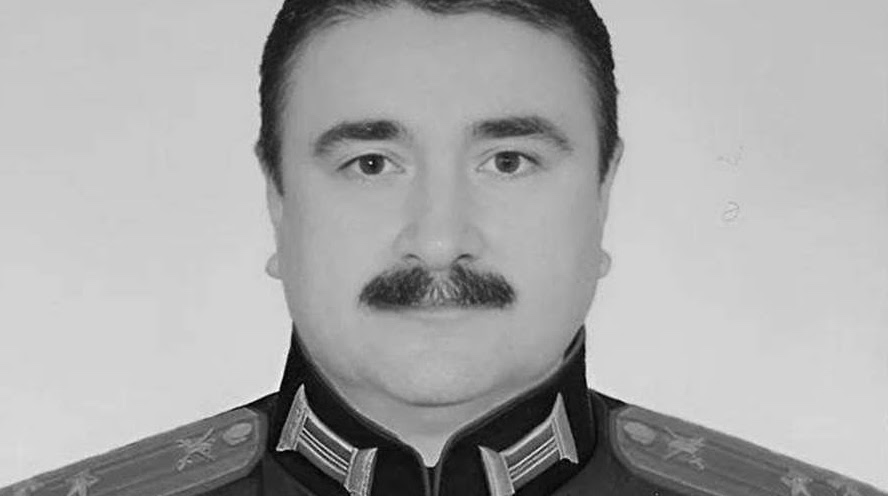
Magomedzhanov died in hospital on February 14 in the Crimean naval base of Sevastopol, from “wounds sustained in battle” and was later buried in his home village with full military honors.
Russia’s 18th Army was formed in occupied Crimea in August 2023 as part of a wider move to reorganize ground units that formerly came under the command of the Russian Navy’s Black Sea Fleet.
The same year it was reported that the 18th Army was deployed to the southern Kherson region of Ukraine as part of the defense against the Ukrainian counteroffensive.
The latest wave of strikes involving Ukrainian long-range one-way attack drones struck Russian energy infrastructure in three regions of Russia, according to local reports.
The governors of the regions of Kursk, Oryol, and Smolensk all reported that energy facilities had been damaged by the drone strikes.
The governor of the Oryol region, Andrei Klychkov, said that energy infrastructure was hit in two communities. The Smolensk and Kursk governors reported one facility damaged in each region.
Russia has been accused of using chemical weapons in Ukraine, in violation of international laws banning their use.
According to U.S. State Department officials, Russia used chloropicrin — a type of choking agent — to win “battlefield gains” in Ukraine.
An oily substance that was widely used in World War One, chloropicrin causes irritation of the lungs, eyes, and skin and can cause vomiting, nausea, and diarrhea.
The United States alleges that Russia used chloropicrin to “dislodge Ukrainian forces from fortified positions.”
U.S. officials said this was not an “isolated” incident and that Russian forces have also made regular use of “riot control agents,” or tear gas, during the war.
The Kremlin — which is a signatory of the Chemical Weapons Convention (CWC) — said the accusations were “baseless.”
Kremlin spokesman Dmitry Peskov told reporters that Russia stood by its obligations under the CWC, which prohibits states from developing or acquiring new chemical weapons.
In the past, the United States has warned of a “severe price” if Russia were to deploy chemical weapons. In March 2022, soon after the full-scale invasion began, President Joe Biden said: “We would respond if [Russia] uses it. The nature of the response would depend on the nature of the use.”
According to a report from Reuters, at least 500 Ukrainian soldiers have been treated for exposure to toxic gases in recent weeks, one of them dying after suffocating on tear gas.
“Malign activities” of other kinds are being perpetrated by Russia in European NATO states, the alliance claims.
Authorities in the Czech Republic, Estonia, Germany, Latvia, Lithuania, Poland, and the United Kingdom have recently investigated and charged people in connection with “hostile state activity” carried out on behalf of Russia.
NATO alleges an intensifying Russian campaign on member states’ territory including disinformation, sabotage, violence, and cyber interference.
In Russia, meanwhile, the state security service says it killed a Ukrainian saboteur planning to attack a fuel terminal in the northwestern Leningrad region with explosives.
Quoting unnamed officials from the FSB, the Russian state security service, the Interfax news agency said the man was a Russian national recruited by Ukraine’s military intelligence. He allegedly entered Russia from Lithuania in March and was killed after shooting at security agents.
The Lithuanian government has denied claims that a saboteur had any links to Lithuania.
“Russia has been systematically conducting disinformation campaigns and provocations for a long time in order to raise tensions among societies and allies and to cover its aggressive actions,” said Vilmantas Vitkauskas, head of the Lithuanian National Crisis Management Center.
“This disinformation spread by the FSB is a case in point. One of the objectives of such aggressive activities is to influence Lithuania’s support for Ukraine. Disinformation will not change Lithuania’s efforts to support Ukraine in its fight for freedom,” Vitkauskas added.
A report from The Insider, a Latvia-based online newspaper specializing in Russia-related subjects, suggests that vital electronic subcomponents used in Russian drones and other weapons are being channeled into the country by a number of illicit routes, including via countries that are allied with Ukraine.
The items in question are tantalum capacitors, said to be used in the Russian Luch Korsar drone, as well as Russian-made versions of the Iranian-designed Shahed one-way attack drone, among others.
According to the article, “Russia’s domestic production of these components is negligible, yet none of Russia’s industries, not even those from the military-industrial complex, is facing a shortage … despite international sanctions aimed at restricting the import of such components.”
Major producers of the capacitors include Israel and El Salvador, but The Insider says it has traced importation routes for these subcomponents through China, as well as Cyprus, Hungary, and Lithuania. The last three countries have all provided assistance to Ukraine of different kinds since the start of the full-scale invasion.
In its latest intelligence update, the U.K. Ministry of Defense assesses that the Ukrainian attack on the Russian airfield Kushchevskaya in the Krasnodar region “has likely contributed to approximately 40 aircraft of different types being removed from the area and dispersed to multiple airfields further from the frontline.”
The airfield, around 125 miles from the front lines, was attacked by Ukrainian drones last week.
As well as being home to a training regiment equipped with Su-27 and MiG-29 fighters and L-39 jet trainers, the U.K. Ministry of Defense says the facility is also used to launch airstrikes against Ukraine, specifically by Su-34 strike aircraft using UPMK glide bombs.
Satellite imagery confirms the airfield was damaged in several locations, and a Flanker-variant aircraft may have been hit. Video that later emerged from the airfield also showed damage to Russian glide bomb kits.
The Ukrainian Ministry of Defense’s Main Directorate of Intelligence (GUR) has published a video showing a successful strike by one of the Ukrainian Armed Forces’ prized M142 High Mobility Artillery Rocket Systems (HIMARS).
In the drone’s-eye-view footage, purportedly taken in the Zaporizhzhia region in southeastern Ukraine, a Russian Tor series short-range air defense system is seen being destroyed after submunitions rain down upon it.
The following video purportedly shows the destruction of two HIMARS or decoys by Russian forces. Attempts appear to have been made to conceal the HIMARS using a tree line. The account here suggests that the Russians may have targeted a single HIMARS launcher as well as an Oshkosh M1083A1P2 supply truck.
An interesting measure taken to protect Russian railroad traffic is seen in the next video. Reportedly, the flat wagon fitted at the front of the train is intended to detonate any mines that may have been laid on the line. The train in question runs from the Russian-occupied port of Mariupol on the Black Sea to Volnovakha in the Donetsk region of eastern Ukraine. Rail logistics of this kind are increasingly being used as an alternative to the Kerch Bridge, which has repeatedly been subject to Ukrainian attacks.
Dramatic footage next from the banks of the Dnieper River. A long-running campaign has seen numerous clashes along the river during and after the Ukrainian counteroffensive to retake Kherson, in southern Ukraine. In this footage, a section of Ukrainian Marines come under fire in their inflatable boat, before leaping into the water for their own protection and wading into cover on the bank of the river.
More action from the Kherson region is seen in the next video, comprising an official release from the Russian Ministry of Defense. The footage reportedly shows an attack on a unit of the Ukrainian Special Forces that is said to have infiltrated an island on the Dnieper River delta. The Russian side claims that upward of 10 Ukrainian soldiers were killed, as the result of airstrikes and drone strikes.
A round-up of drone news from Ukraine follows, starting with an interesting report from The Kyiv Independent, which includes an interview with a Ukrainian “bomber drone pilot,” named Andrii, with the callsign “Inspector.”
Inspector describes days spent scouting for targets, flying a drone out from his dugout to reconnoiter the village in which his team is fighting.
“Sometimes you have so many drones in the air,” said Inspector, “so many people wanting to work all at the same time that our guys end up interfering with each other’s video feed.”
Tactics include using a Chinese-made commercial drone to maintain an overlook of the village, while a first-person-view (FPV)-type drone carries out ‘bombing’ missions on Russian forces.
With the Russian troops holed up in basements, the Ukrainian drone teams are gradually demolishing them, dropping one grenade at a time.
Reflecting the huge importance of drones on the battlefield, Lt. Gen. Oleksandr Pavliuk, commander of the Ukrainian Ground Forces, recently stated that FPV drones and ‘kamikaze’-type drones are now responsible for more combat fatalities than either artillery or aircraft.
“Drones kill more soldiers on both sides than anything else at present, Pavliuk claimed. “They have also created a scenario whereby almost everything can be seen by drones, not just on the front line but to a depth of between 10km and 30km [6.2 to 18.6 miles] on either side.”
Among the latest drone attacks on a Russian armored vehicle to result in a truly colossal explosion is this example, provided in an official video from the Ukrainian Ministry of Defense.
On this occasion, a stationary Russian BMP-1 infantry fighting vehicle was struck by an FPV drone that arrived from the rear. The drone observing the engagement is said to have been operated by the 47th Mechanized Brigade. This unit is known to have been active recently in the defense of the villages of Berdychi and Orlivka.
The reported destruction of two different types of ground-based air defense systems is the subject of the videos in the next two embedded tweets.
The first of these involves a Ukrainian loitering munition, reportedly a RAM II type, which is said to have targeted a Russian 9A39M1 reloading vehicle, part of the Buk medium-range surface-to-air missile system, somewhere in the Kursk region.
Clearly, the 9A39M1 vehicle was carrying a significant load of missiles, evidenced by the catastrophic ammunition detonation immediately after the drone impact.
Much less clear cut is the result of the next engagement, seen in an official Russian Ministry of Defense video. This reportedly involved the destruction of one of Ukraine’s German-supplied IRIS-T SLM air defense systems. According to the Russian side, a launcher and a mobile command center were destroyed, but the actual types of vehicles hit cannot be confirmed by reference to the video. Highly realistic decoys of these system have been deployed as well.
The next two videos suggest that quadcopter-like drones are increasingly being employed at night, by both sides in the conflict.
The first video apparently shows the destruction of a large Russian drone, type unidentified, which is shot down by a Ukainian drone-hunting team with the help of thermal-imaging equipment.
Next, a pair of Russian soldiers gets a nasty surprise from a Ukrainian drone, during a night patrol.
Meanwhile, Ukraine’s relentless pursuit of cutting-edge drone technology is evident in the next video, showing a new type of FPV drone, together with its control system, comprising goggles and sidestick. The drone will look where the pilot looks.
This is our latest view of the U.S.-supplied Joint Direct Attack Munition-Extended Range (JDAM-ER) precision-guided bomb in Ukrainian service, once again seen on the mysterious modified pylon mounted on a MiG-29 fighter. You can read more about the possible functions of that pylon here.
Two examples of U.S. armor protection are seen in the following tweets, on different armored fighting vehicles provided to Ukraine by the United States.
First, here’s a good look at the Bradley Reactive Armor Tiles (BRAT) protection on a Ukrainian M2 Bradley infantry fighting vehicle. In this case, the protection helped the Bradley survive a reported attack by a Lancet loitering munition. As you can read about here, the BRAT kit comprises boxy explosive reactive armor (ERA) bricks around the sides of the hull.
Next, we get a rare look inside the turret armor of a Ukrainian M1150 Assault Breacher Vehicle (ABV), a variant of the M1A1 Abrams main battle tank.
Late last month, images and video emerged showing the first claimed capture by Russia of a U.S.-donated M1150 ABV, which you can read more about here.
We have seen the Ukrainian Bradley wreaking havoc on Russian armor with its 25mm cannon on previous occasions. Among the latest victims was this Russian MT-LB tracked armored fighting vehicle, which was on the receiving end of withering fire from the Ukrainian IFV’s Bushmaster M242 25mm automatic cannon.
Guns of a notably smaller caliber were on show when Russian Minister of Defense Sergei Shoigu visited the headquarters of the Russian Joint Group of Forces recently. One interesting item among the new weapons developments on show was this counter-drone system, comprising three linked Soviet-era 7.62mm PKT belt-fed general-purpose machine guns, combined with a large collimating sight.
Finally, this drone clip of an artillery barrage shows just how much destruction is being dealt out in a single act along the front:
Contact the author: thomas@thewarzone.com
